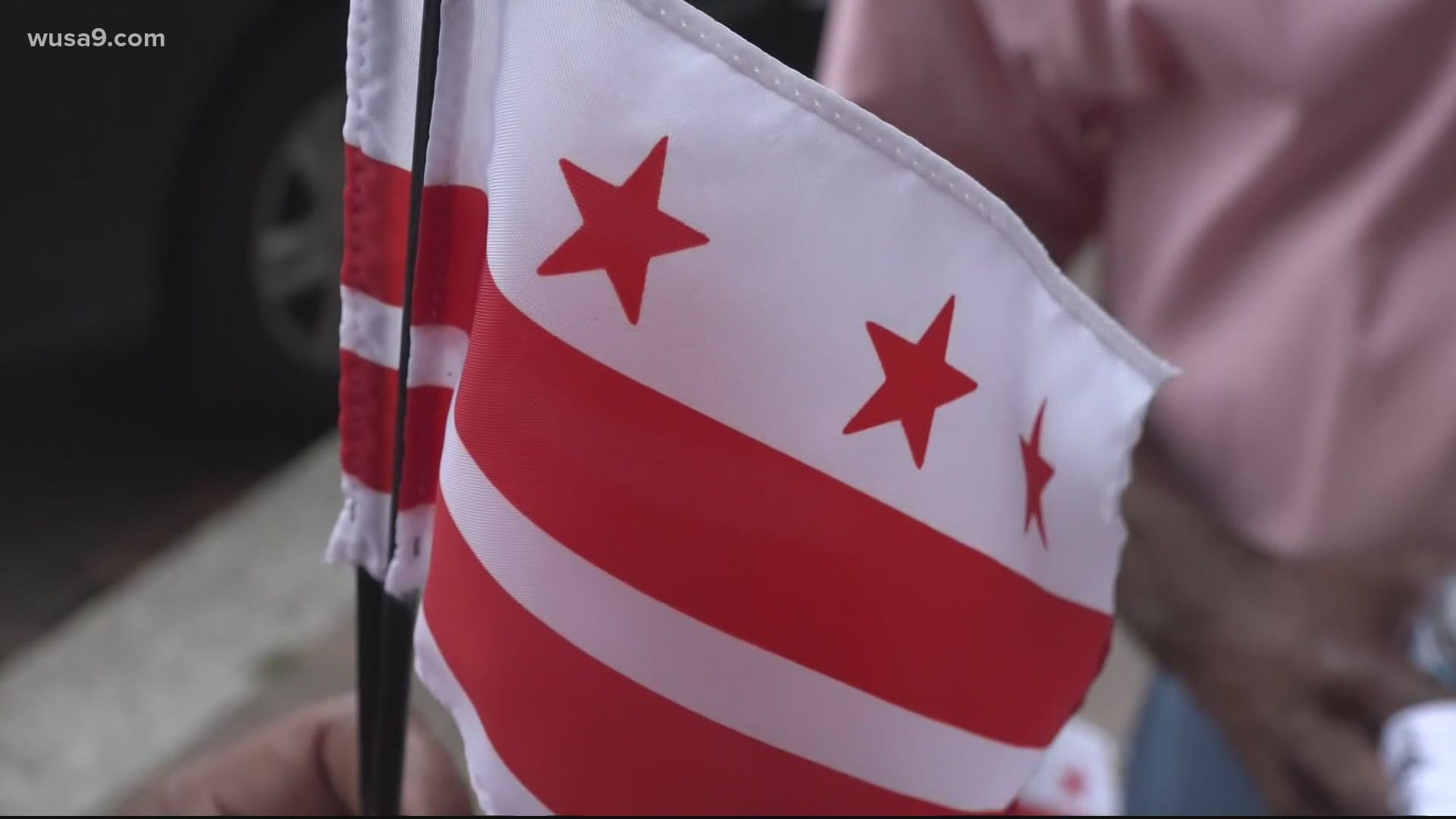WASHINGTON — The topic of statehood is bubbling up again thanks to a Congressional hearing this week. This topic has some people on social media wondering what the process would look like for a territory like Washington D.C. to become a state and how long would it take.
This week Republican congressmen argued the only path to statehood would be through a constitutional amendment. However, that is not all it would need. There is a lot that makes a state beyond just the title.
D.C. Shadow Senator Paul Strauss said he oftentimes looks back at history to see what the timeline would look like for D.C. statehood.
"The first petition for Alaskan statehood was filed in 1912 and it wasn’t until 1959 that Alaskans finally got statehood. It is interesting because so many of the parallels between DC statehood follow Alaska's struggle," said D.C. Shadow Senator Paul Strauss.
There is also the question about what infrastructure is needed to make a state. Washington D.C. would also need it's own legislature, courts and capitol.
"The transition from federal district to U.S. state is really going to be pretty simple because we have taken a lot of steps already including ratifying the Constitution. We’ve secured the boundaries and we have a transition plan in place," said D.C. Shadow Senator Paul Strauss.
"The state of Washington DC is going to function pretty much like the District of Columbia is except it will have full federal representation and more importantly for so many of us, the self-determination we need to pass our own laws and make our own decision and truly act in the best interest of the people who live here," said D.C. Shadow Senator Paul Strauss.
*So the mayor becomes the governor which would be important because we would need them to be able to call out the National Guard when we want them," said D.C. Shadow Senator Paul Strauss.
As for a name change, Congresswoman Eleanor Holmes Norton said that would not be necessary.
"Fortunately, the district has found a way to avoid a name change. People are used to Washington DC. It will be called Washington DC but it will stand for Washington Douglass Commonwealth, named after Frederick Douglass who was the first proponent," said Congresswoman Eleanor Holmes Norton.
Since Washington D.C. is the seat of power for the federal government, the 23rd Amendment would need to be considered. That amendment allows U.S. citizens residing in DC the ability to vote for presidential electors, whose vote goes toward the Electoral College for President and Vice President.
The 23rd Amendment gives the District three electoral votes in the race for president. If a new state is created and formed, and the federal territory as the "district" remains, that small section would get a huge amount of influence.
Thomas Colby, a law professor at The George Washington University Law School, said Congress would have to repeal that 23rd Amendment when they pass a statehood bill.
“If you do create a state out of DC, and you reduce the seat of government just to the buildings right around the mall, technically right at that moment, that new seat of government, those new buildings right around the mall get those three votes for the president," Colby said. "Which is not what anyone wants to have happen.”
First House Democrats need to pass legislation for Washington D.C. to become a state. This is expected to happen this year for a second time but it will likely be overrun by Republican opposition in the Senate.
House Democrats promise another vote on D.C. statehood by this summer.
The last state to officially join the U.S. was Hawaii, back in 1959. Here's what the timeline looked like:
- March 11, 1959 : Senate voted 75-15 in favor of the Admissions Act
- March 12, 1959: House approved as well 323-89
- March 18, 1959: President Dwight Eisenhower signed the “Hawaii Admissions Act”.
- June, 1959: Hawaiians voted to become a state “under terms specified in the Admissions Act" to accept the statehood bill.
- August 21, 1959: Hawaii officially became first state

